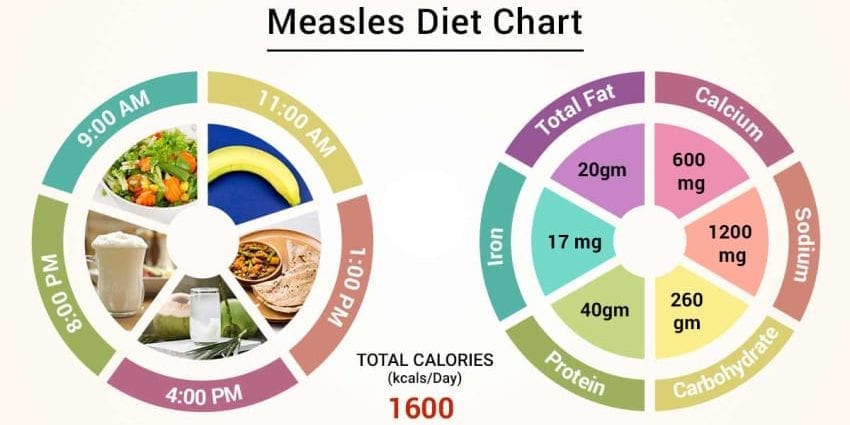Contents
General description of the disease
Rubella is an infectious viral disease with a latent incubation period and shows symptoms twenty days after infection.
Causes of the disease
The disease is transmitted by airborne droplets from a virus carrier or a patient with rubella, which can be the source of the disease in the period from two weeks before the manifestation of rubella symptoms and three weeks after. Especially, the risk of infection increases in closed, unventilated rooms with prolonged contact with the patient. Children are most susceptible to the disease in the period from 2 to 7 years.
Symptoms and effects of rubella
After the incubation period, the disease manifests itself with the following symptoms:
slight fever, pharyngitis, headache, conjunctivitis, enlarged occipital lymph nodes. The most noticeable symptom is a patchy rash not only on the face, but also all over the body, which disappears after at most seven days without peeling or pigmentation. For children, the disease is milder. The most dangerous consequences of rubella are for pregnant women in the first trimester of pregnancy, as it can cause the fetus to develop a syndrome of “a large number of defects”, affecting the hearing organs, eyes and cardiovascular system of the child.
Features of nutrition for rubella
The diet of rubella patients does not differ much from the usual regime, it is only necessary to include more plant foods and dairy products in it, and increase the amount of vitamins. With rubella in children, the level of good and high-quality nutrition should be maintained, because even a slight deterioration in it can lead to a decrease in immunity and a protracted course of the infectious process. The child’s menu should be based on taking into account his age, the severity and period of the illness, the presence of appetite, the nature of the stool and other things. Dishes should be easily digestible, with gentle heat treatment, not too hot. It is also necessary to provide a sufficient amount of liquid (for example: rice and carrot broth, boiled water, vitamin tea).
Healthy foods for rubella
- foods with vitamin C that increase the body’s immunity and help fight disease (rose hips, strawberries, black currants, sweet peppers, sea buckthorn, honeysuckle, Brussels sprouts, wild garlic, broccoli, viburnum, kiwi, cauliflower, red cabbage, orange, horseradish , garlic feather, spinach, lemon, tomato, raspberry, guayava, cantaloupe);
- products with vitamin P (white peel and interlobular parts of citrus fruits, blueberries, blackberries, chokeberries, cherries, grapes, apricots, parsley, dill, cilantro, paprika, green salad, buckwheat, green tea, cherries, plums, apples, blueberries, chokeberry, beets, lettuce, sorrel and garlic);
- dairy products (fermented baked milk, cream, natural ice cream, butter, feta cheese, kefir, yogurt, cottage cheese, sour cream, low-fat cheese, processed cheese).
Folk remedies for rubella
- an infusion of St. John’s wort, leaves and berries of lingonberry (pour three tablespoons of each crushed component with half a liter of boiling water, boil over low heat for ten minutes, leave for an hour), take four times a day, 50 ml;
- infusion of celandine (chop four tablespoons of herbs and flowers of celandine, pour six glasses of boiling water, leave for an hour) wash the skin and add to the bathroom;
- an infusion of a mixture of herbs: yarrow, wormwood, string, clover color, birch buds, dandelion root and alder cones (steam 1 tablespoon of the herbal mixture with a glass of boiling water and insist in a thermos for 10 hours) take 70-100 ml before meals;
- vitamin teas: 1) rose hips, black currants (1: 1), 2) nettle leaves, rose hips, lingonberries (3: 3: 1), 3) rose hips, lingonberries (1: 1);
- decoction of coltsfoot, wild rose, cornflower, calendula and chamomile;
- decoction of valerian, edelweiss, motherwort (brew and insist in a thermos for 10 hours), take for children from 1 to 3 years old 1 teaspoon per half a liter of liquid, from 3 years to 10 – one tablespoon, children over ten years and adults – two tablespoons;
- ready-made herbal preparations that are sold in a pharmacy (for example: birch buds, string, clover flowers, dandelion root, wormwood herb, boiling yarrow) take one third three times a day;
Dangerous and harmful foods for rubella
chips, carbonated water, fast food products, sausages, sausages, dumplings, pork sausages, nuts, croutons, chocolate-nut bars, chebureks, belyashi, shawarma, fries, smoked fish and meat, foods with preservatives, margarine, shop sweets (cakes with cream, cakes, puff pastry), coffee, energy drinks, artificial ice cream, candy in bright packaging, chewing candies, chupa chups, mayonnaise.
Attention!
The administration is not responsible for any attempt to use the information provided, and does not guarantee that it will not harm you personally. The materials cannot be used to prescribe treatment and make a diagnosis. Always consult your specialist doctor!










